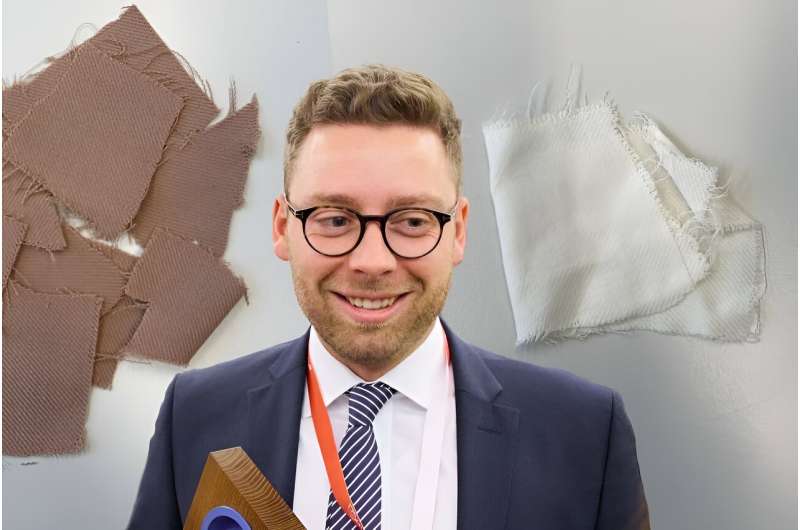This article has been reviewed according to Science X's editorial process and policies. Editors have highlighted the following attributes while ensuring the content's credibility:
fact-checked
trusted source
proofread
Elastane recycling: Stretching the lifespan of textiles

Clothing is far too valuable to simply dispose of and burn. Starting in 2025, used textiles are to be collected and recycled throughout the EU. Improved recycling processes are urgently needed to deal with the huge amount of textiles that will then be produced in an efficient and environmentally friendly way.
The recycling of mixed textiles is difficult—especially if they contain elastane. The TU Wien (Vienna) has therefore developed methods that not only detect elastane better and in a more environmentally friendly way than before, but can also separate it in a gentle way in order to recover other fibers undamaged at the same time. The key here is to find the right solvents.
Elastane, the machine killer
"Many of the materials we use to manufacture clothing are easily recyclable as pure materials—such as cotton, polyester or polyamide," explains Emanuel Boschmeier, who is currently working in his doctoral study on this topic at the Institute of Chemical, Environmental and Bioscience engineering at TU Wien. The study is published in the journal Resources, Conservation and Recycling.
"But elastane, even if it is only mixed in small quantities, makes recycling using conventional methods impossible," says Boschmeier. Elastane is so stretchy that the shredders that are usually used to shred textiles before recycling cannot cope with it. Elastane leads to soiling, blockages and clumping in the machines.
Reliable detection
The first step is to find a reliable and fast method to accurately detect elastane contents in textiles. "During our research, we discovered that no such method existed until now," says Boschmeier. "The usual test method uses a solvent that is classified as harmful to health and are also extremely time-consuming."
A novel elastane quantification tool has been developed in Vasiliki-Maria Archodoulaki's laboratory, a detection method that measures how much elastane is actually present in a garment. The detection method is based on mid-infrared spectroscopy, which was optimized for the research together with Bernhard Lendl.
Separating fibers by type
The next step was to find a method to separate elastane from other fibers. "We experimented with different solvents and carried out theoretical studies. We finally came across a harmless solvent that selectively removes the elastane, leaving the reusable fibers intact," says his supervisor Andreas Bartl. A patent application has already been filed for the method. In this way, materials such as polyester or polyamide can be almost completely recovered—and even the solvent itself can be recovered and reused.
Even when wool is combined with polyester and elastane, the individual components can be used: The wool is broken down with enzymes under mild, harmless conditions. This method produces an amino acid cocktail that can be used in the cosmetics industry or in fertilizer production. In the next step elastane is separated and recyclable polyester remains.
More information: Emanuel Boschmeier et al, New separation process for elastane from polyester/elastane and polyamide/elastane textile waste, Resources, Conservation and Recycling (2023). DOI: 10.1016/j.resconrec.2023.107215
Provided by Vienna University of Technology





















